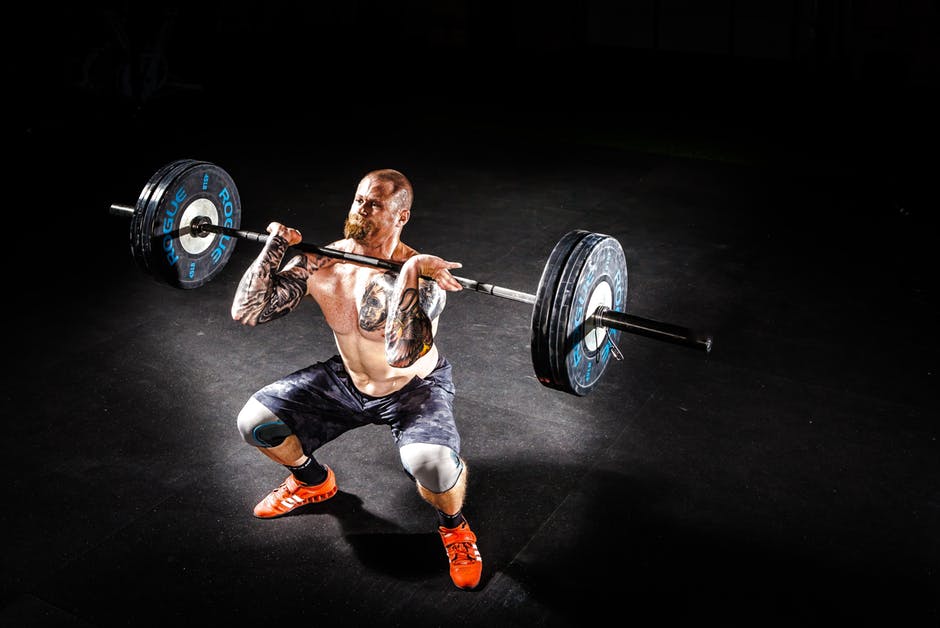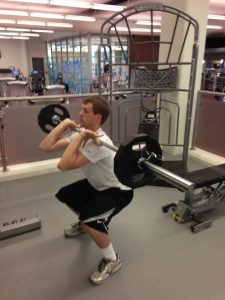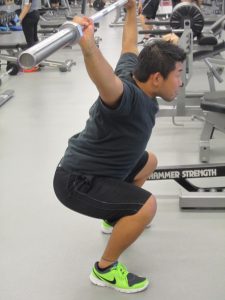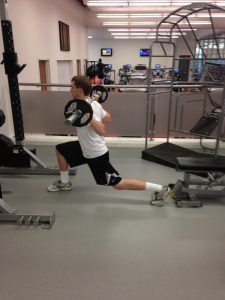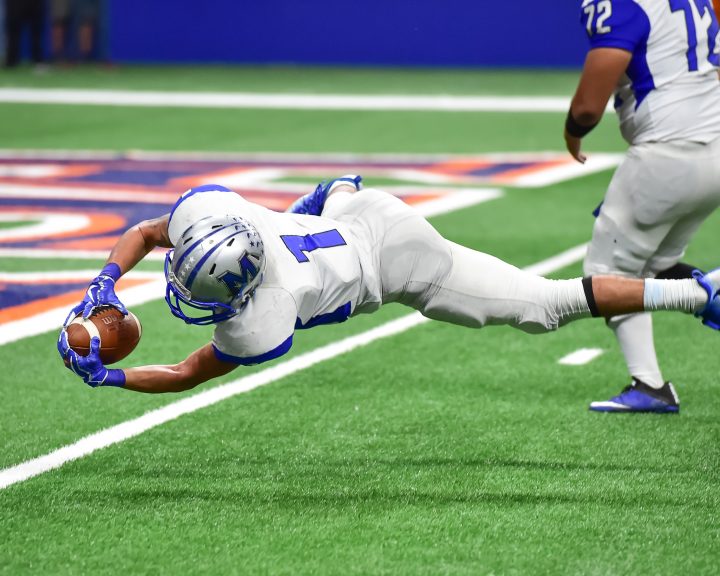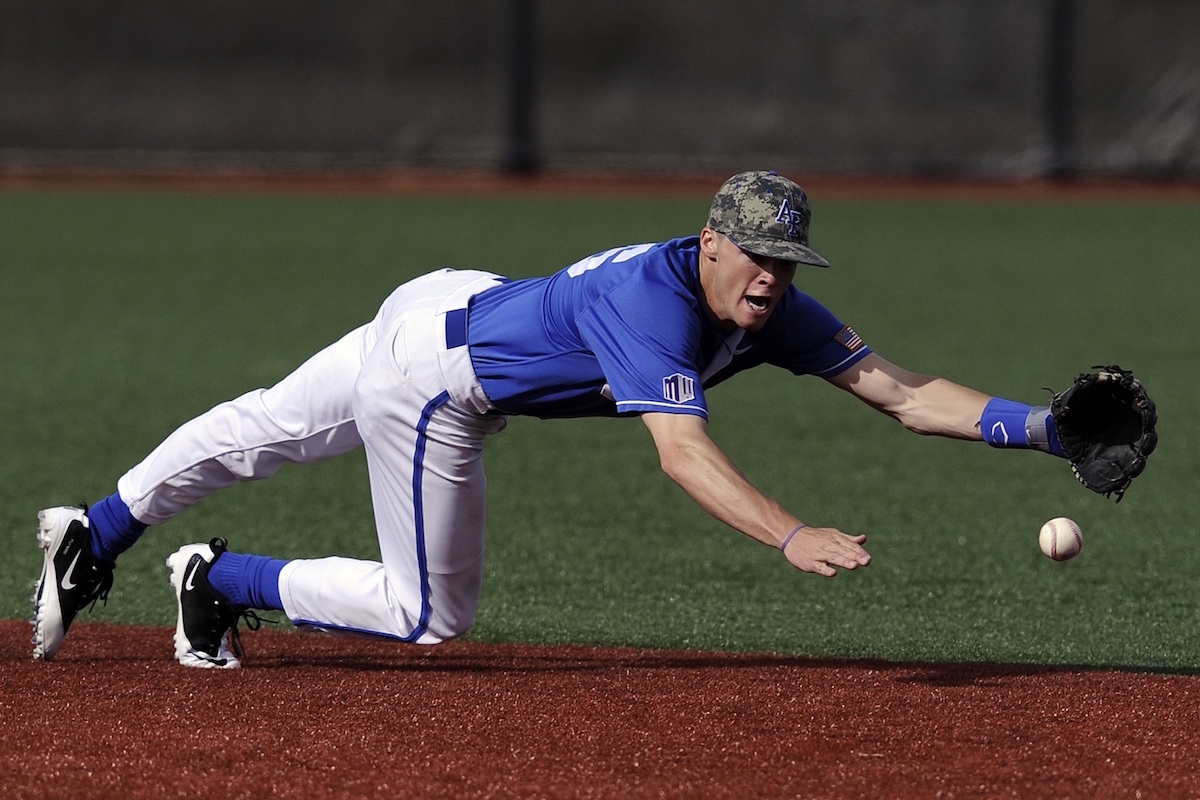I wanted to use this blog to discuss a few different types of squat variations that we see in strength and conditioning. All of these types of squats have uses, but they also have shortcomings that the coach needs to be aware of. With this blog I’m going to (briefly) cover the techniques and cover some thoughts on integrating them into a program.
Front squats:
First, I want to start with the front squat. In my long-ago Olympic lifting days, this exercise was a mainstay in my programs – but my personal ones and for the athletes that I coached. The front squat is very specific to Olympic lifting, it is what happens after the bar is “caught” in the clean, so it’s important for an Olympic lifter to be strong in this exercise.
Because the barbell is on the front of the shoulders, it requires the athlete to be upright to keep control of it. Because the athlete is upright, the front squat strengthens the core and is more knee-dominant than the back squat. But, those technical changes also mean that less weight can be handled than in the back squat. It’s not unusual to see athletes at 70% of back squat with the front, a really good athlete might go up as high as 85%.
The secret to the front squat is keeping the elbows high. If the elbows are allowed to drop down then the bar shifts, which makes balance (and keeping the trunk upright) very difficult. It also puts the weight on the wrists, which causes wrist pain. If we can figure this part out, then it becomes a fairly simple exercise to master.
Because of the weights involved, the back squat is my primary squat. Because I don’t work with Olympic lifters anymore, the front squat is a great supplemental exercise. For example, if there are two days during the week that involve lower body work then the front squat would be on the second day. Or, it might be substituted for the back squat for a four-week block.
For example:
Day one (maximum strength):
Back squats
Romanian deadlifts
Bench press
Bent-over Rows
Military press
Day two (power emphasis):
Snatch high pulls
Power cleans
Clean pulls
Day three (off)
Day four (lower body emphasis):
Front squats
Lunges
Good mornings
Reverse hyperextensions
Calves
Overhead squats:
This is another Olympic lifting-specific exercise. It teaches the bottom position of the snatch and teaches standing up from “catching” the bar in the snatch. It’s a very technical exercise, it requires a great deal of shoulder mobility and balance. On the positive side, it develops these qualities (mobility, balance, confidence with heavy weights overhead, etc.). On the other hand, it’s not very forgiving of mistakes, almost requires bumper plates, and the amount of weight that athletes will work up to is very limited so it’s not as effective at other exercises for increasing one’s ability to exert force against the ground.
If I were working with Olympic lifters, this exercise would show up on snatch day for a long time in their training. Eventually it would turn into a complex exercise (for example, pulls + snatches + overhead squats). For them, it builds confidence and strength in the bottom position of the snatch.
But, for athletes of other sports I don’t see this as a main exercise simply because it requires a tremendous investment in time to teach and has limited return for improving sports performance (you just can’t work up to enough weight).
Having said that, the overhead squat is a great exercise to include in a warm-up. It’s tremendous for the shoulders, hips, knees, and ankles in terms of mobility and warming up. In this context it could be used with lighter weights, the athletes would get some benefits from it, and it would not detract from the main exercises.
Split squats:
This is another favorite of mine. It involves doing squats from a split position, with one foot ahead of the other. It requires the athlete to stay tall while they flex the front knee and hip to lower themselves, then they mainly use the front leg to return to the standing position. In addition to developing core strength and leg strength, it also develops balance. With this exercise, I program athletes to begin with about 30% of their back squat. Eventually athletes may work up to 50-70% on each leg.
I like this exercise for track and field athletes. If I have two days a week to have a lower body emphasis, this exercise will show up. It’s also valuable for athletes that sprint.
I think that most athletes need to squat. Sometimes we dilute the gains that our athletes could be making by getting distracted by other exercises or training systems. All three of the squat variations that I covered have roles, but they are all typically limited roles and not primary ones.

